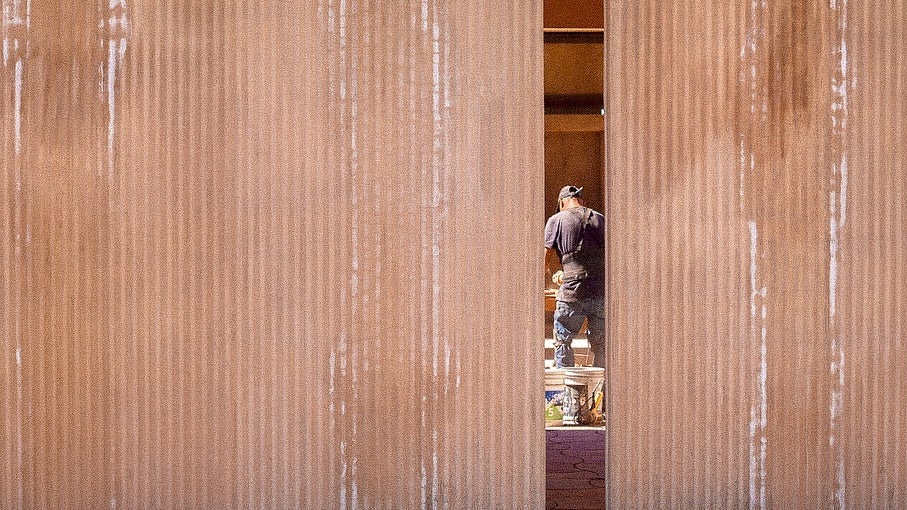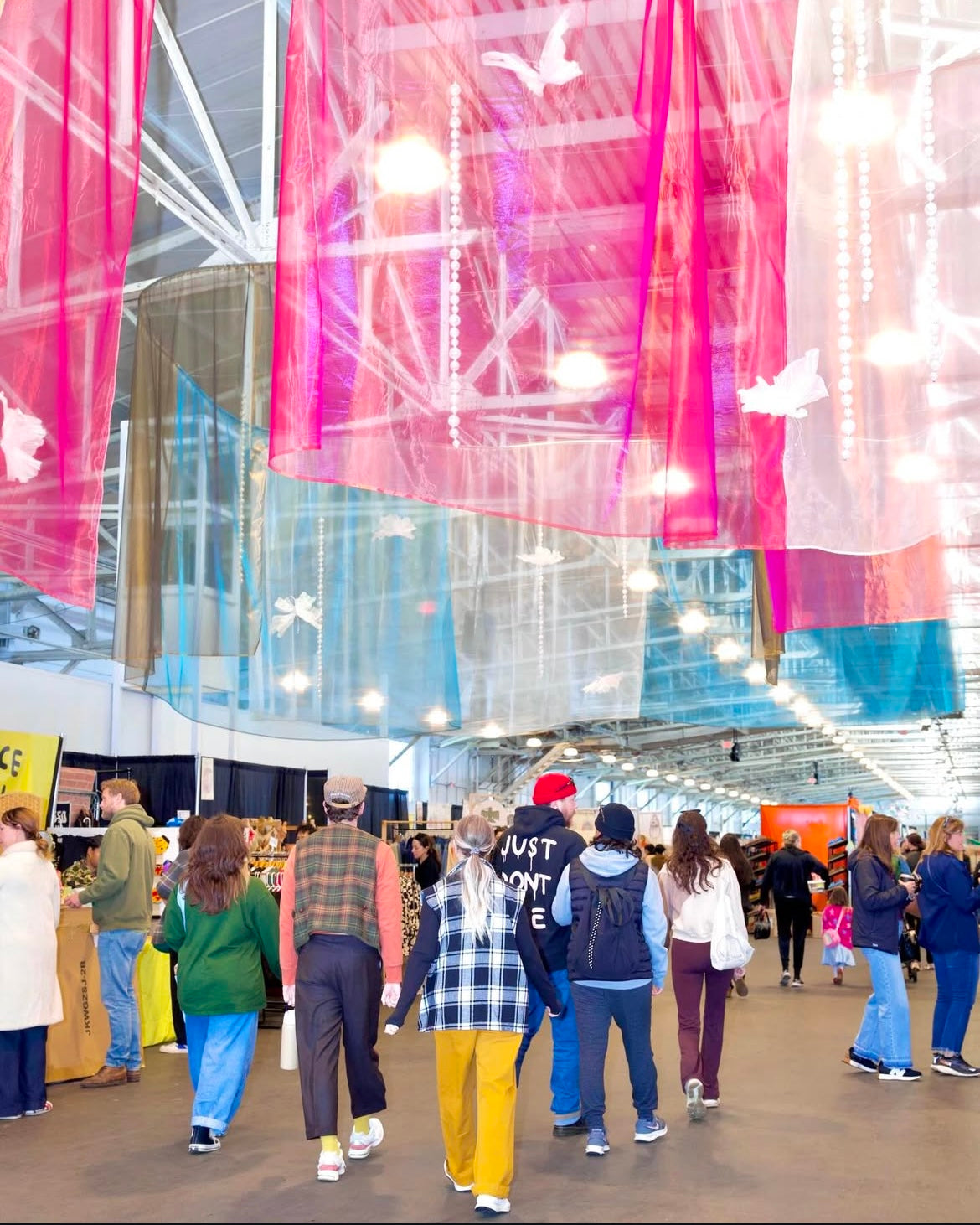We had the opportunity to sit down with a dear friend of the brand, Ita, the founder of Casa Tamarindo, to talk about materials, imagination, and what it means to design for the future while staying rooted in place. What began years ago as a conversation around inflatable furniture has grown into an ongoing dialogue about architecture, biodesign, and the quiet power of vernacular knowledge.
In our Espíritu Presents series, we spotlight the thinkers, makers, and wanderers who embody Espíritu: curiosity, craftsmanship, and the courage to shape culture on their own terms. Today, that spotlight turns toward Ita and the evolving world of Casa Tamarindo.

1 · Meet Ita — Founder of Casa Tamarindo
Ita is a Mexican designer and researcher, and the founder of Casa Tamarindo, a practice that moves between art, architecture and biodesign. Casa Tamarindo often describes itself as a vernacular research and design house, a studio that pays close attention to the way things are made, the materials we choose and the cultures that shape those choices.
Rather than fitting into a single category, his work spans from speculative narratives to built experiments, always grounded in place and in the lived intelligence of everyday practices. Casa Tamarindo operates like a lens: it looks at local craft, ancestral knowledge and contemporary technology, and asks how they can come together to propose new ways of living.

2 · First connection with Espíritu; early experiments in design
Casa Tamarindo’s story intersects with Espíritu earlier than many people know. Almost eight years ago, Ita was deep into a project exploring inflatable furniture—objects that could literally change their form depending on how they were used. Soft, transformable pieces that blurred the line between sculpture, utility and play, they were part of a broader search for a more contemporary language of design for that moment.
Around that same time, Espíritu was on a parallel path: rethinking the classic huarache and searching for ways to modernize its design while honoring its origins. Both projects, though very different in form, were driven by a similar instinct—to take something familiar, whether a piece of furniture or a traditional shoe, and ask how it might respond to how we move, live and express ourselves today. That shared curiosity is where our relationship with Ita and Casa Tamarindo began.

3 · What Is Casa Tamarindo?
Today, Casa Tamarindo lives at the intersection of multiple worlds. As Ita explains it, the studio has done everything from films like “Chicana Stardust”—a kind of Mexican sci-fi, the Milky Way’s first space telenovela—to biodesign and architecture.
On one end of the spectrum, there is narrative and image: projects that imagine Latinx futures in outer space, mixing humor, drama and speculative design. On the other end, there is tangible experimentation: materials developed from seaweed or beer byproducts, tested, refined and pushed toward real-world applications.
Casa Tamarindo isn’t one thing because the future isn’t one thing. It’s a constellation of experiments, all orbiting the same questions: how do we live, what do we build with, and what stories do our materials tell?

4 · Biodesign and the Architecture of Tomorrow
Biodesign has become a major focus of Casa Tamarindo’s work. Ita talks about material development using organic sources such as seaweed and brewery byproducts—taking what we usually consider waste and reimagining it as the basis for new surfaces, objects and structures.
These materials don’t stop at prototype scale. The studio is increasingly thinking in terms of architecture—how these living or once-living substances can become part of actual built environments. It’s not just a question of aesthetics, but of responsibility: how do we use what already exists in more intelligent ways? How do we design with the rhythms of nature rather than against them?
For Ita, beauty and ethics aren’t separate categories; they’re part of the same equation. A material should look and feel compelling, but it should also invite us to rethink how we relate to the ecosystems around us.

5 · Vernacular Research: Learning from What’s Already There
One of the phrases that comes up often when Ita speaks is “vernacular research.” It’s an anchor for Casa Tamarindo. He describes it as research that deals with everything from the materiality of how we do things to the culture surrounding that materiality.
In simple terms, it’s not only about the physical stuff—wood, leather, stone, fiber, algae—but also about the rituals, histories and habits attached to them. Vernacular research means paying attention to how people have been solving problems for generations, often with limited resources and deep sensitivity to place.
It means treating traditional techniques not as relics, but as living technologies. In that sense, Casa Tamarindo and Espíritu share common ground: both see heritage as a toolbox, not a museum.

6 · The Challenge of Dreaming Big
When asked about his biggest challenge right now, Ita doesn’t mention logistics or funding first. Instead, he talks about scale. He compares the process to a writer who decides to tackle a big story: you begin by dreaming big and saying, “let’s go for it,” and then, once you’re inside the work, you realize how much you still don’t know.
That gap between vision and knowledge can be intimidating, but it’s also where the most meaningful learning happens. For Casa Tamarindo, that means embracing projects that feel slightly too ambitious, trusting that the research, collaborators and insights will reveal themselves along the way. It’s a kind of faith—not blind optimism, but a grounded belief that it’s worth stepping into the unknown.

7 · Building a Living Laboratory
Recently, Ita and his partner reached an important milestone: they acquired land in an ancestral area that Ita has been visiting since childhood. He describes this place as a future “living laboratory” where many of Casa Tamarindo’s ideas can finally be tested in real space.
The vision is to work with the local community and with both local and international leaders from different fields, opening up new conversations around environmental challenges and potential solutions. It’s about building and prototyping, yes, but it’s also about listening—to the land, to the people who have cared for it long before any design studio existed, and to the more-than-human world around it.
For Ita, the chance to leave a footprint in this ancestral territory is both a huge honor and a huge responsibility. It’s exciting and scary at the same time—which is usually a sign that you’re standing at the edge of something important.

8 · Milestones and Vernacular Futures
Alongside the living laboratory, Casa Tamarindo has also been tapped to design a pavilion for Mexican Design Week—a public-facing project that brings the studio’s philosophy into dialogue with a broader audience.
Across all these milestones, one belief runs through Ita’s work: that tomorrow can be a better day. It’s a quiet statement, but it summarizes the heart of Casa Tamarindo—a practice that doesn’t separate imagination from care, or design from context.
At Espíritu, that’s exactly the kind of spirit we want to celebrate. Through Espíritu Presents, we’re honored to share stories like Ita’s—stories that remind us that materials are never just materials, and that the future is something we all design, together.
9 · Follow Casa Tamarindo
To stay close to Ita’s work and see how Casa Tamarindo continues to evolve, you can find the project on Instagram at:
Casa Tamarindo: @casa_tamarindo
Tamarindo House: @tamarindohouse





